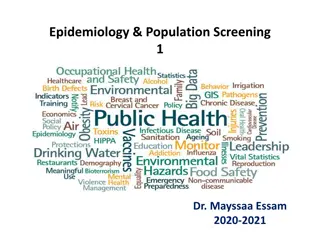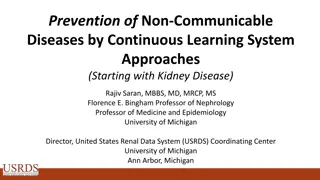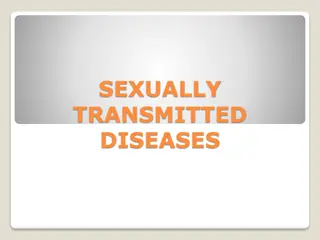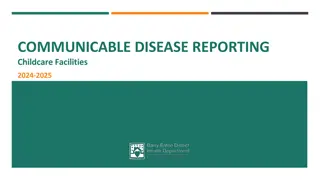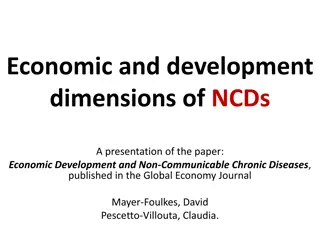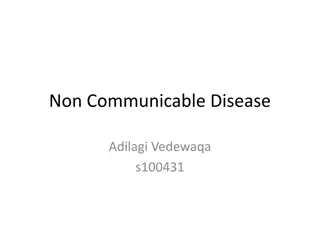Understanding Communicable Diseases: A Global Perspective
Explore the dynamics of communicable diseases in the 6th edition of "Complimentary Teaching Materials - A Global Perspective" by Roger Webber. Learn about epidemic vs. endemic diseases, incubation periods, population dynamics, herd immunity, mathematical models for disease control, and various types of epidemics. Dive into detailed illustrations and insights on infection parameters, epidemic curves, and the concept of basic reproductive rates in disease transmission.
Download Presentation

Please find below an Image/Link to download the presentation.
The content on the website is provided AS IS for your information and personal use only. It may not be sold, licensed, or shared on other websites without obtaining consent from the author. Download presentation by click this link. If you encounter any issues during the download, it is possible that the publisher has removed the file from their server.
E N D
Presentation Transcript
COMPLIMENTARY TEACHING MATERIALS Communicable Diseases, 6thEdition A Global Perspective Roger Webber
Chapter 2: Communicable Disease Theory COMPLIMENTARY TEACHING MATERIALS
Summary A disease can either be epidemic or endemic. Epidemic diseases can be common source or propagated, but by measuring the minimum and maximum incubation period from the first case, the time of infection can be determined. The size of the population will determine the frequency of epidemics and the number that need to be vaccinated to produce herd immunity. An endemic disease is described by its incidence and prevalence, but foci of infection can also occur. Mathematical models can look at different parameters of a disease and deter-mine the best strategy for control. COMPLIMENTARY TEACHING MATERIALS
Fig. 2.1. Parameters of an infection COMPLIMENTARY TEACHING MATERIALS
Fig. 2.2. curve of an extended source epidemic in a limited population (simplified). The epidemic COMPLIMENTARY TEACHING MATERIALS
Fig. 2.3. Epidemic types COMPLIMENTARY TEACHING MATERIALS
Fig. 2.4. epidemic. Investigation of a point-source COMPLIMENTARY TEACHING MATERIALS
Fig. 2.5. source epidemic. Investigation of a propagated- COMPLIMENTARY TEACHING MATERIALS
Fig. 2.6. i.e. >1. Maximal transmission: every infection produces a new case. Basic reproductive rate increasing, COMPLIMENTARY TEACHING MATERIALS
Fig. 2.7. Unsustained transmission: each transmission gives rise to less than one new case and the infection dies out. Basic reproductive rate decreasing, i.e. <1. COMPLIMENTARY TEACHING MATERIALS
Fig. 2.8. universally homogeneous prevalence rate is measured in an area. (B) Once control measures have been implemented, foci of persistent transmission are revealed. The focality of endemic disease. (A) A COMPLIMENTARY TEACHING MATERIALS
Fig. 2.9. of schistosomiasis. Theoretical environmental control COMPLIMENTARY TEACHING MATERIALS
Further reading Barker, D.J.P. and Cooper, C. (1998) Epidemiology in Medical Practice, 5th edn. Churchill Livingstone, London. Bonita, R. and Beaglehole, R. (2006) Basic Epidemiology, 2nd edn. World Health Organization, Geneva, Switzerland. Giesecke, J. (2016) Modern Infectious Disease Epidemiology, 3rd edn. Hodder Arnold, London. Kirkwood, B.R. (2016) Essential Medical Statistics, 3rd edn. Blackwell Scientific Publications, Oxford, UK. Porta, M. (2014) A Dictionary of Epidemiology, 6th edn. Oxford University Press, New York. Schneider, D. and Lilienfield, D.E. (2015) Lilienfield s Foundations of Epidemiology. Oxford University Press, New York. COMPLIMENTARY TEACHING MATERIALS






